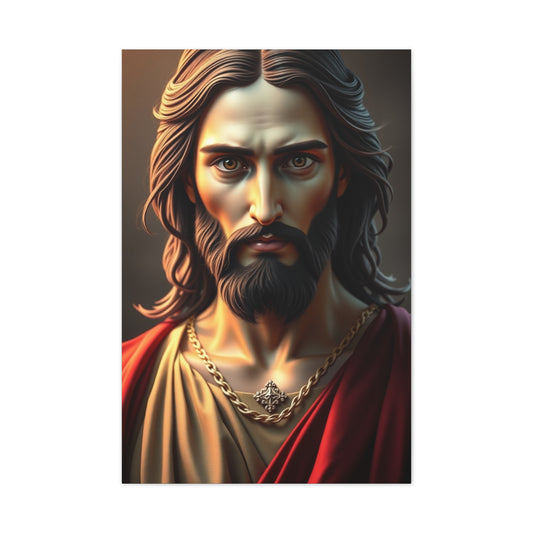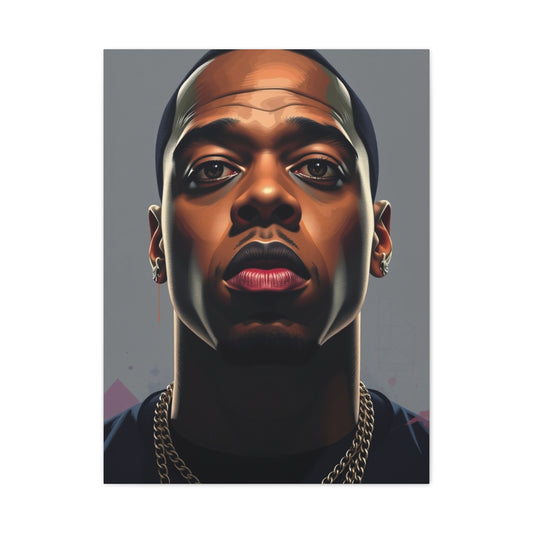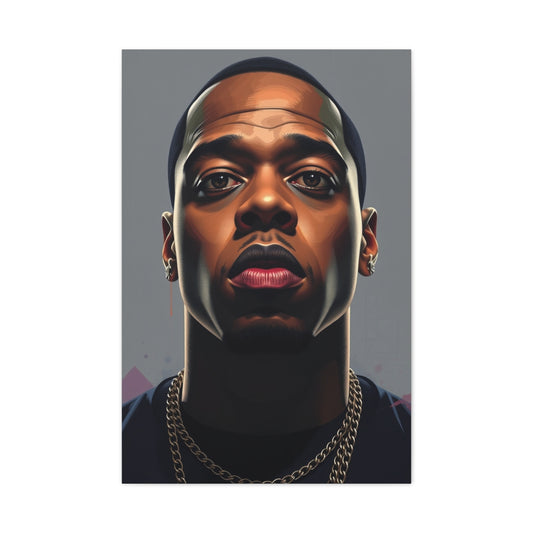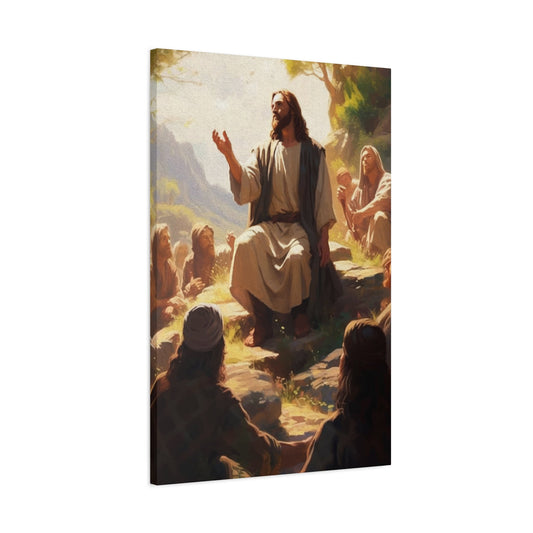When it comes to capturing the essence of your most cherished memories or showcasing captivating works of art, the medium of printing plays a crucial role in elevating the final output. Amidst a myriad of printing options, photo paper stands as a preeminent choice for those seeking to preserve vivid, high-resolution prints with an exceptional level of clarity. The technical aspects of photo paper printing combined with its versatility ensure that it remains one of the most sought-after techniques for both personal and professional use.
What Exactly is Photo Paper Printing?
At its core, photo paper printing is the process of transferring an image onto high-quality, specially coated paper designed to magnify the visual richness and sharpness of photographs. The intricate structure of the paper, paired with cutting-edge printing technologies, guarantees a result that mirrors the depth and vibrancy of traditional photographs. Available in an array of finishes, photo paper offers an aesthetic variety that caters to a wide range of artistic preferences.
Glossy Finish
The glossy finish is perhaps the most common and eye-catching choice for photo paper prints. This finish brings a brilliant shine to the surface, which enhances the vibrancy of colors and deepens contrast, making it an ideal selection for images with bold, rich tones. A glossy print can transform a photograph into an almost three-dimensional piece of visual art, with the light-reflective properties intensifying the colors, creating an aura of dynamic energy. However, while it produces mesmerizing results, the glossy surface can create reflective glare, especially in bright or direct lighting conditions, potentially detracting from the viewing experience.
Related Catagories:
Matte Finish
For those who seek a more subdued, refined aesthetic, the matte finish provides a sophisticated alternative. Unlike glossy prints, matte photo paper lacks the intense shine, offering a soft, velvet-like touch that contributes to a more understated and elegant presentation. Matte prints also excel in environments where light reflection is a concern, as they are less prone to glare. The absence of gloss results in a calmer, more serene feel, making matte photo paper a perfect choice for subtle artwork or timeless portraiture. Additionally, the finish lends an air of professionalism to art reproductions, which is why many photographers and artists gravitate toward this option.
Satin/Lustre Finish
Occupying a middle ground between glossy and matte, the satin or lustre finish is a highly versatile choice. This finish provides the vibrant color saturation and depth typical of glossy prints but with a soft, non-reflective surface that mitigates the drawbacks of glare. The satin finish combines the best aspects of both glossy and matte, offering a polished, sophisticated effect while maintaining the ability to present intricate details with sharpness and clarity. This balance makes satin prints an optimal choice for a wide variety of photography styles, from family portraits to nature shots, as well as for art reproductions that require a balanced, nuanced look.
Why Choose Photo Paper Printing?
The appeal of photo paper printing lies in its ability to deliver incredibly crisp, vivid images with unparalleled detail. There are several distinct advantages to choosing photo paper as your medium for printing, whether you're an amateur photographer looking to preserve memories or a professional artist striving to showcase your work in the best possible light.
Unmatched Detail and Sharpness
One of the most significant benefits of photo paper printing is its ability to capture every minute detail of an image, ensuring that even the most subtle nuances are faithfully represented. Whether you are printing high-definition portraits, intricate still life compositions, or sweeping landscapes, photo paper’s premium finish will preserve the sharpness and richness of the original image. This results in a print that exudes crispness and clarity, offering a true-to-life representation of the photograph or artwork. The high-resolution capability of photo paper allows photographers and artists alike to achieve a level of precision that is indispensable when presenting their works in any professional or personal setting.
Affordability
Despite its high-quality output, photo paper printing remains an affordable option when compared to other advanced printing methods. While there are numerous premium printing solutions on the market, photo paper provides a cost-effective alternative without sacrificing the quality that makes a print stand out. Whether producing a single print or a large batch, the affordability of photo paper printing makes it a practical choice for a wide range of applications, from personal photo albums to exhibition-quality art pieces.
Great for Framing
Photo paper prints are ideal for framing, offering a traditional, polished presentation that elevates the visual appeal of any photograph. Whether you're framing a landscape print for a gallery, a portrait for the family home, or a corporate image for a business space, photo paper fits seamlessly into standard frames, creating a refined, professional display. With their inherent flexibility, photo paper prints can be customized to suit various frame styles and sizes, further enhancing the overall aesthetic.
Frames not only serve as a protective barrier for delicate prints but also help convey a sense of purpose and permanence to the artwork. Framing photo paper prints adds a layer of sophistication, making them perfect for gifting or creating an artistic statement piece for home or office decor.
Drawbacks of Photo Paper Printing
While photo paper printing offers a wide array of benefits, it does come with certain limitations that may influence its suitability for particular needs.
Requires a Frame
Photo paper prints are inherently delicate and require additional protection, often in the form of framing behind glass. While this ensures that the print is shielded from environmental factors such as dust and moisture, it also means that the print is not as durable as some other media, such as canvas or metal prints. Without the proper protection, photo paper prints can easily be damaged or creased. As a result, framing is not merely an aesthetic choice but a necessity to preserve the integrity of the print over time.
Glare Issues
The glossy finish, while vibrant and eye-catching, is prone to creating glare under certain lighting conditions. This can detract from the viewing experience, especially in well-lit rooms or areas where light reflects off the surface. For those who wish to display their prints in spaces with high ambient light, matte or satin finishes may be more suitable, as they are far less prone to reflections. In environments with controlled lighting, however, glossy prints can provide a stunning visual impact that is hard to replicate.
Less Texture
In comparison to materials like canvas, photo paper lacks the intrinsic texture that adds a tactile, artistic dimension to prints. Canvas prints, for example, have a three-dimensional quality that provides depth and interest, while photo paper maintains a smoother, flatter surface. This can make photo paper prints appear more like traditional photographs rather than unique pieces of art. For those who appreciate texture and depth in their visual work, this may be a drawback, as photo paper cannot replicate the rich, tactile experience provided by canvas prints.
The Unrivaled Appeal of Photo Paper Prints
Despite its few limitations, photo paper printing remains one of the most versatile and high-quality printing methods available. It excels in capturing fine details, providing sharpness and vibrancy that enhances the visual impact of your images. Its affordability, combined with its ability to deliver professional-grade results, makes photo paper an appealing choice for photographers, artists, and those seeking to immortalize their memories. Whether you're framing a personal portrait, creating a dynamic art piece, or curating a professional portfolio, photo paper printing provides an accessible, effective solution that brings your images to life with remarkable clarity and precision.
In the world of fine art and photography, where detail and vibrancy are paramount, photo paper printing continues to reign supreme as a medium that captures the very essence of an image, transforming it into a timeless visual masterpiece.
The Allure of Canvas Printing – Elevating Photographs into Timeless Art
In the realm of fine art and professional photography, the medium of choice for creating visually striking, high-end displays is undoubtedly canvas printing. Offering a dramatic departure from the crisp, smooth surfaces of photo paper, canvas printing provides a rich, textured fabric that transforms an ordinary photograph into a statement piece. The tactile quality of canvas not only enhances the aesthetic appeal of the print but also imbues it with a sense of depth, luxury, and sophistication that resonates with art connoisseurs and enthusiasts alike.
What Makes Canvas Printing Unique?
Canvas prints are produced by transferring an image onto a durable canvas fabric, which is then meticulously stretched over a wooden frame. The natural texture of the canvas material introduces an additional layer of visual intrigue, creating a piece that offers both vibrancy and a depth that photo paper simply cannot replicate. The marriage of canvas and image results in a dynamic presentation that allows the artwork to evolve into something far greater than its original form. What makes canvas printing stand out is its fusion of traditional painting techniques and modern printing technologies, providing a unique experience for viewers.
The Art of Canvas Fabric
Canvas, originally used for oil paintings by great artists such as Rembrandt and Van Gogh, has been revered for its durability and the texture it imparts to any art piece. This time-honored material is not only robust but also retains the integrity of the colors printed on it, ensuring the longevity of the artwork. Canvas prints maintain their visual richness over time, making them an investment that continues to deliver value for years to come. The addition of texture to the print allows for the creation of multidimensional images, offering both visual and tactile engagement, which is particularly captivating when viewed from varying angles.
Pre-Stretched and Ready to Hang
One of the primary advantages of canvas prints is the convenience they offer. Unlike photo paper prints, which often require additional framing and glass protection, canvas prints come pre-stretched and ready to hang. This added convenience makes them a perfect choice for individuals who want to showcase their artwork without the hassle of purchasing a separate frame or dealing with the intricacies of matting and glass. The pre-stretched canvas is tightly secured over a wooden frame, ensuring a taut and professional presentation that’s ready to adorn any wall in mere moments.
Timeless Aesthetic Appeal
Canvas prints exude an unparalleled sense of timeless sophistication. Whether displayed in a living room, gallery, or office space, canvas artwork has the ability to elevate its surroundings with an inherent elegance. The textured surface of the canvas, coupled with the painterly finish, gives the image a more artistic, gallery-worthy quality, transforming any photograph into an impressive visual masterpiece. Unlike the glossy or matte finishes of photo paper, which often present images with a more photographic look, canvas adds a tactile and painterly dimension that turns the print into a conversation piece.
The inherent texture of the canvas also complements the medium’s ability to evoke depth in the print. This means that every photograph, whether a close-up portrait or an expansive landscape, is imbued with a new sense of dimensionality that enhances its emotional and visual impact. Canvas prints are particularly ideal for those looking to transform mundane, everyday images into iconic, museum-like displays.
Durability: Built to Last
One of the standout features of canvas prints is their remarkable durability. Unlike traditional photo prints, which may fade or deteriorate over time due to exposure to light and environmental factors, canvas prints can endure for decades without losing their vibrancy. When treated properly, canvas prints can resist the degradation caused by UV light, humidity, and other external elements, making them an excellent investment for long-lasting wall art. As the texture of canvas is resistant to wrinkling, creasing, and other forms of physical damage, it’s more durable than other types of paper-based printing, ensuring that the artwork retains its beauty for generations.
In essence, canvas prints are not merely an ephemeral decoration, but a lasting testament to the power of art and photography. The longevity of canvas prints makes them an attractive choice for those looking to immortalize cherished memories, professional portfolios, or art collections for years to come. Given their resilience and stability, canvas prints are often considered a legacy investment for future generations to admire.
Why Opt for Canvas Printing?
Canvas printing provides a host of benefits that elevate it above other types of printing methods. It combines the visual allure of traditional art with the practicality of modern technology. Whether you're displaying a family portrait, a wedding photo, or a collection of fine art prints, canvas offers several distinct advantages.
An Artistic Flair
Canvas printing is the perfect medium for those seeking a more artistic approach to photography or artwork. The texture of the canvas fabric enhances the depth and dimensionality of the print, giving it a sophisticated, almost painterly quality. The gentle, tactile surface of the canvas adds a sense of organic warmth and richness, which is particularly suitable for images that are intended to convey emotion and artistic expression. Unlike the flat nature of photo paper prints, canvas brings an element of physicality to the image that resonates with viewers and engages them on a sensory level.
No Glass Required
One of the most remarkable advantages of canvas printing is that it does not require the protective glass often associated with photo paper prints. While photo prints are susceptible to scratches, dirt, and fading without proper glass protection, canvas prints maintain their integrity without additional coverings. The absence of glass provides several distinct benefits: more durability, easier maintenance, and a more modern, unencumbered aesthetic. This allows the canvas to breathe, giving the artwork a raw, authentic feel that complements its artistic presentation.
Non-Reflective Surface
Canvas prints feature a matte finish, which means they do not reflect light in the same way that glossy photo prints can. This non-reflective surface makes them ideal for hanging in areas with varied lighting conditions, as they won’t suffer from unsightly glare. Whether in direct sunlight or under the warm glow of a table lamp, canvas prints maintain their visual integrity without interference from harsh lighting or reflections.
Challenges of Canvas Printing
Despite the numerous advantages of canvas prints, there are some challenges that come with this medium. Understanding these potential drawbacks can help ensure that canvas printing remains the right choice for your project.
Higher Cost
Canvas prints are typically more expensive than photo paper prints due to the additional materials, the stretching process, and the time-consuming techniques involved in production. The specialized materials used in canvas printing often come with a higher price point, making this medium a more costly option for those on a budget. However, given the longevity, aesthetic appeal, and durability of canvas prints, many find that the investment is well worth the cost for creating a visually stunning, timeless piece of art.
Softness of Detail
While the texture of canvas adds significant visual interest to prints, it can also soften fine details in the image. Highly detailed or architectural photographs, for instance, may lose some sharpness when printed on canvas, as the textured surface absorbs more light and diffuses fine lines. For those requiring maximum clarity and sharpness, such as in technical photography or close-up shots, photo paper might be a more suitable option for preserving precision.
Fixed Framing
Since canvas prints are typically pre-stretched over a wooden frame, they come ready to hang, eliminating the need for additional framing. However, this also means that the print’s frame is fixed and cannot be changed easily. For those who prefer to have the flexibility to change frames, this could be a limitation. The pre-stretched nature of canvas also means that the overall presentation cannot be easily altered after the printing process.
The Uniqueness of Canvas Printing
Canvas printing offers a distinct, highly effective way to transform your photographs or artwork into high-end displays. The texture and durability of canvas create a timeless appeal, making it a perfect choice for individuals who want to create luxurious, gallery-style presentations. Whether you’re looking to enhance your home décor, build an art collection, or display professional work, canvas printing delivers depth, richness, and sophistication that is unparalleled by other printing methods.
With its tactile surface, durability, and artistic flair, canvas printing is more than just a way to display photographs—it’s a medium that elevates images into works of art. Whether you are framing a cherished memory or creating a visual masterpiece, canvas printing remains the ideal choice for those who appreciate the transformative power of art.
Deciding Between Photo Paper and Canvas Prints: A Comprehensive Guide
When it comes to showcasing your photographs or artwork, the decision between photo paper and canvas prints can be both exciting and overwhelming. Each medium has distinct advantages, and understanding the nuances of each can help guide your choice. Whether you're creating art for your home, designing a professional portfolio, or producing a series of prints for a special project, the material you choose can make all the difference. While both offer vibrant and high-quality reproductions, photo paper and canvas bring unique characteristics to the table. This detailed comparison will help you navigate the decision-making process by exploring the benefits and drawbacks of both options, so you can select the one that best aligns with your specific needs and preferences.
Why Choose Photo Paper Printing?
Photo paper printing is a popular choice for many individuals and businesses due to its ability to produce highly detailed, sharp, and vivid prints. If you’re aiming for precision, clarity, and affordability, photo paper may be the ideal option for you. Here are several reasons why photo paper prints might be the better choice for your project:
1. You Need High Definition
One of the most significant advantages of photo paper is its ability to capture and reproduce fine details with remarkable clarity. Whether you're printing high-resolution professional photographs, intricate illustrations, or fine art reproductions, photo paper excels in delivering images with crisp lines and sharp contrasts. The surface of photo paper is smooth, which allows for fine details to stand out. Portraits, close-ups of nature photography, or architectural images that require precision benefit significantly from the high-definition capabilities of photo paper. The result is a print that mirrors the original image, preserving every subtle detail in vibrant color.
2. You Want a Cost-Effective Option
For those working with a budget, photo paper printing offers a cost-effective solution without compromising on quality. It’s a great choice if you need to produce a large volume of prints or multiple copies of the same image. Printing on photo paper allows you to create professional-grade prints at a fraction of the cost of canvas. This is especially beneficial for businesses, photographers, and artists who need affordable solutions for marketing materials, exhibitions, or even personal projects. The low cost of photo paper printing makes it accessible for many individuals and organizations, allowing you to get more prints without breaking the bank.
3. You Plan to Frame Your Prints
Photo paper prints are particularly ideal if you have specific framing preferences or want the flexibility to change the framing style over time. Unlike canvas prints, which come pre-stretched and fixed onto a frame, photo paper can be easily mounted or framed in a variety of ways. Whether you want an elaborate frame or a minimalist style, photo paper offers more flexibility. Additionally, framing a photo print behind glass provides an added layer of protection from dust, dirt, and fading, ensuring that the print remains pristine for years. Photo prints are highly adaptable, allowing you to choose from a vast selection of frames and matting options, making them suitable for different design aesthetics and personal preferences.
4. You Prefer a Glossy Finish
For those who prefer a shiny, high-impact look, photo paper can be an excellent choice. Glossy photo paper offers a reflective finish that enhances the vibrancy and depth of colors. Bright, bold hues appear especially striking on glossy paper, making it ideal for prints that aim to make a statement. The glossy finish amplifies contrast, providing an overall dynamic look that grabs attention, especially in well-lit spaces. The shine from a glossy photo paper print adds another dimension to the image, enhancing its visual appeal. However, it’s important to note that glossy prints may be more prone to fingerprints and glare under certain lighting conditions.
Why Choose Canvas Printing?
While photo paper may excel in certain areas, canvas printing offers a distinct set of benefits that may better suit other artistic needs. If you're aiming for a more elegant, artistic presentation or seeking a durable, long-lasting piece, canvas prints could be your ideal choice. Let’s dive into the reasons why you might choose canvas over photo paper for your printing project:
1. You Want an Artistic Look
Canvas prints are an excellent choice for those who want their photographs or artwork to have a more artistic, gallery-quality feel. The natural texture of the canvas fabric adds depth and dimension to the print, making it appear as if it were painted by hand rather than printed. The textured surface transforms an image into a work of art, creating a painterly effect that enhances its visual appeal. This is particularly ideal for individuals who want to turn their photographs into sophisticated pieces suitable for home decor, galleries, or art exhibitions. The absence of the smooth, glossy finish found in photo prints gives the image a raw, organic quality that many find more visually compelling.
2. You Need a Durable, Ready-to-Hang Print
One of the most practical benefits of canvas printing is the durability it offers. Canvas prints are known for their longevity and resistance to wear and tear. Unlike photo paper, which can fade or tear over time, canvas prints can last for decades if properly cared for. The durability of the material makes it an excellent choice for creating long-lasting art that stands the test of time.
Related Catagories:
Another major advantage is that canvas prints come pre-stretched over a wooden frame, making them ready-to-hang upon arrival. This eliminates the need for additional framing and saves valuable time during the installation process. Canvas prints are ideal for people who want to display their artwork immediately without the hassle of choosing and purchasing a separate frame. Whether it's a personal gift or a statement piece for your living room, canvas prints are designed to be displayed as-is, giving you a convenient and elegant solution for showcasing your art.
3. You Prefer a Non-Reflective Surface
Canvas prints are typically produced with a matte finish, which eliminates the problem of glare that can sometimes occur with photo paper prints, particularly those with a glossy finish. If you want to display your prints in a brightly lit room or in spaces where light reflection is a concern, canvas is the ideal solution. The matte surface allows for a clear view of the print without any unwanted reflections or glare, making it easier to appreciate the artwork from different angles. This feature is particularly beneficial in gallery settings, offices, or living rooms where the lighting can vary throughout the day.
4. You Want a High-Quality, Finished Look
The pre-stretched nature of canvas prints ensures a polished, professional finish. When stretched over a wooden frame, the edges of the canvas are clean and well-defined, giving the artwork a finished appearance. Additionally, the lack of glass allows the canvas to retain its authenticity and organic appeal. For those seeking a more natural and refined look, canvas prints offer a sophisticated alternative to photo paper prints. The material’s durability, coupled with its artistic finish, gives canvas prints a more luxurious, high-end feel compared to traditional photo paper prints.
Photo Paper vs. Canvas Printing?
Ultimately, the choice between photo paper and canvas printing comes down to your unique project requirements, artistic vision, and budget. If you are focused on producing high-definition prints with crisp detail, affordable pricing, and flexible framing options, photo paper might be your best option. On the other hand, if you are looking for artistic, textured prints with a timeless, durable finish, and ready-to-hang convenience, canvas printing is an excellent choice. By carefully considering the attributes and benefits of each medium, you can make an informed decision that will result in a stunning and visually engaging final product.
In summary, both photo paper and canvas prints offer distinct advantages that cater to different needs and preferences. Whether you're aiming for precise, high-definition clarity or artistic depth and texture, understanding the unique benefits of each medium will help ensure that your prints not only meet your expectations but exceed them.
Making the Final Decision – Which Medium is Right for You?
Choosing between photo paper and canvas prints is no small feat. Both offer distinct qualities, and understanding their benefits can help you make an informed decision based on your specific needs, project objectives, and budget. As we have explored in detail, each medium excels in different areas—photo paper is the go-to for sharpness, detail, and affordability, while canvas offers texture, artistic appeal, and durability. In this final section, we’ll delve deeper into the factors that should guide your decision-making process and provide more nuanced insights to help you select the perfect medium for your project.
Photo Paper Prints: The Pinnacle of Precision and Affordability
Photo paper prints are undoubtedly the go-to medium for those who value detail and clarity. The smooth, glossy surface of photo paper brings out the most intricate elements of an image, delivering a crisp, vivid reproduction of the original. Whether you are printing family portraits, professional photography, or fine art reproductions, photo paper’s high-definition capability ensures that every nuance—be it the fine lines of a painting or the subtleties in a photograph—is captured with accuracy.
Ideal for Precision-Centered Projects
When precision is your number one priority, photo paper is an irreplaceable medium. Whether you’re printing a detailed landscape shot, a product catalog for your business, or a fine art reproduction for a gallery, photo paper excels at reproducing every minute detail with clarity. The quality of photo paper allows it to deliver incredible depth, making colors appear rich and layered, while ensuring the sharpness of edges and contours in the image. If your artwork demands the finest details, you will find that photo paper prints provide a higher level of definition than other mediums.
For professional photographers or fine artists who rely on high-precision for their work, photo paper offers unmatched quality. The glossy finish of photo paper can make your work pop, creating a visual effect that instantly draws the eye. This medium is also perfect for individuals who need to showcase their portfolio in a way that emphasizes crisp detail and vibrant color. Photo prints can bring out every aspect of a high-resolution image, resulting in a visually stunning piece.
Cost-Effective and Versatile
Another significant advantage of photo paper printing is its affordability. Photo paper prints are more budget-friendly compared to canvas prints, which can make it a more practical choice if you are working with a limited budget or need to print large volumes. This makes photo paper an attractive solution for businesses, photographers, or artists who need multiple copies of the same image without overspending. Whether you're creating a marketing campaign, producing event materials, or simply printing family photos, photo paper offers an affordable solution without compromising quality.
Additionally, the versatility of photo paper should not be overlooked. It can be framed in traditional frames, making it an excellent choice for anyone who wants the option to switch out frames over time. Whether you want a classic gold frame for your living room or a sleek black frame for your professional office, photo paper prints fit seamlessly into any frame type. This customization ensures that your prints will always match your décor, while allowing you to refresh the framing style as trends change.
Canvas Prints: The Artistic Touch for Long-Term Displays
In contrast to photo paper, canvas prints offer a more textured, artistic feel that elevates your images to new heights. The fabric texture and matte finish of canvas provide a sense of depth and dimension that transforms photographs into works of art. If you’re aiming for artistic sophistication and durability, canvas prints deliver exceptional results. Let’s dive deeper into the reasons why canvas prints might be your preferred option for certain types of projects.
Ideal for Home Décor and Artistic Displays
Canvas prints are the perfect medium if you’re looking to decorate your home, office, or gallery space with elegant, artistic imagery. The textured surface of canvas transforms any photograph into a fine art piece, making it ideal for large-scale prints or wall art displays. Whether you’re decorating your living room or adding a personal touch to a gallery wall, canvas brings a timeless, sophisticated charm to any space. The painterly quality of canvas prints adds a sense of authenticity and craftsmanship, transforming ordinary images into extraordinary pieces of art.
Canvas prints are especially popular for showcasing artistic photography, abstract art, or any images that benefit from the rich texture and depth that canvas provides. Whether you’re printing a family portrait, landscape scene, or an abstract design, canvas will enhance the visual impact of your image. The surface gives your artwork a dynamic, three-dimensional quality that draws attention and evokes emotion.
Durability and Longevity
In addition to their artistic appeal, canvas prints are also known for their durability. When properly stretched and mounted, a canvas print can last for decades without showing signs of wear or fading. This makes canvas prints an excellent choice for those who want to create long-lasting displays that stand the test of time. Whether it’s a cherished family photo or a bold piece of art, the longevity of canvas ensures that your investment will remain vibrant and intact for years.
The pre-stretched nature of canvas prints means that they come ready-to-hang, offering the ultimate convenience for those who want to display their artwork without the hassle of framing or additional preparation. The lack of glass adds to the natural aesthetic of the print, while also preventing the risk of glare or reflections, making canvas ideal for various lighting environments.
Perfect for Large-Scale Art and Custom Projects
For those seeking a larger-than-life display or a statement piece, canvas prints are an ideal choice. The ability to print on large canvas sheets allows for bold, oversized artwork that becomes the focal point of any room. Whether you’re creating a stunning wall mural, a gallery wall, or a custom gift for a special occasion, canvas offers endless possibilities. The texture of the canvas also lends itself well to printing custom designs, abstract art, or images that may require a more artistic presentation.
The versatility of canvas also extends to creating personalized gifts or memorial pieces. Custom canvas prints are a thoughtful way to showcase a favorite photograph, a special moment, or even a family heirloom in a visually striking and sentimental way. Whether it’s a wedding gift, a family reunion memento, or a birthday present, canvas prints are an excellent choice for those who want to make a memorable, long-lasting impression.
Conclusion
The final decision between photo paper and canvas prints largely depends on the purpose, aesthetic preferences, and budget you have for your project. If your goal is to produce sharp, highly detailed prints that require precision, affordability, and the ability to be framed in various styles, photo paper is the clear choice. It offers a high-quality, cost-effective solution for professional photographers, businesses, or anyone looking for high-definition prints that capture every detail.
On the other hand, if you’re seeking a more artistic, sophisticated, and durable presentation for your images, canvas prints are the perfect option. The textured finish, longevity, and ready-to-hang convenience of canvas make it a superior choice for those looking to create high-end art or display large-scale prints in a home décor or gallery setting.
At Wallpics, we understand the importance of finding the perfect medium for your images. Whether you opt for the vibrant detail of photo paper or the artistic flair of canvas, our commitment to quality printing ensures that your final product will exceed expectations. Whichever medium you choose, we are dedicated to bringing your images to life with the highest standards of craftsmanship and attention to detail.
Ultimately, both photo paper and canvas prints offer unique ways to transform your photos or artwork into stunning displays. By carefully considering the strengths and weaknesses of each option, you can confidently make a decision that aligns with your vision, needs, and budget. The choice is yours—create something extraordinary today.




























